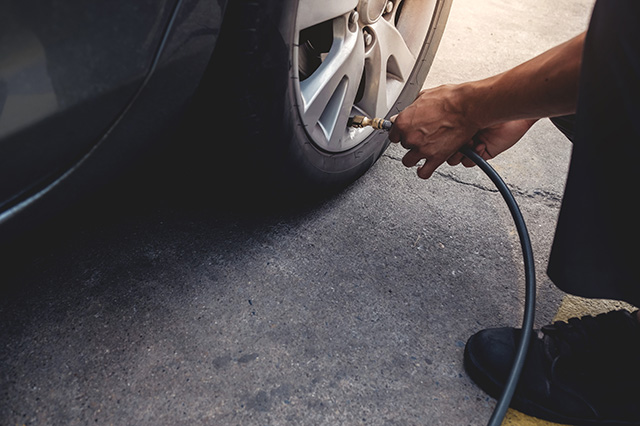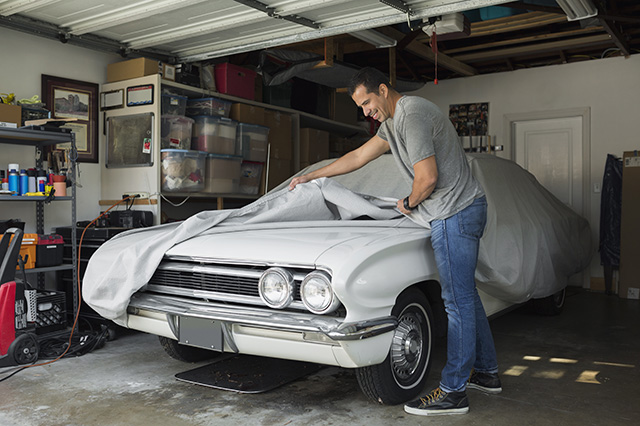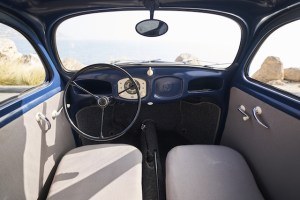Whether it’s a classic or collector car or the one you are leaving behind while you head south to warmer weather, winter car storage may be necessary for you. Here are a few tips to help ensure that when the car comes out of its hibernation, there won’t be any problems.
Clean Your Car First
Don’t put away a dirty car. Wash it and wax it and when the car is clean and dry use a high-quality breathable car cover to protect the paint. Thoroughly clean the interior, vacuum the carpets, cleaning as far as possible under the seats. Just before you cover the car, block the engine air intake and tailpipes to prevent mice from crawling in and making a house for themselves. Just remember to remove the blockage before you start the engine.
To prevent mold/mildew buildup, use desiccant moisture drying packs. These packs are capable of staining, so put them on a disposable baking pan. If you have problem with rodents or any other critters, also use a granular animal repellent. These repellents aren’t poison but a mixture of predator scent and in some cases a natural irritant derived from cayenne pepper.
Check Your Fluids
If it has been a while, have the oil and filter changed. If this service was done recently, check all the vital fluids to make sure they are full. This includes brake fluid, engine coolant, transmission, power steering fluid and even the windshield washer. Also lubricate all the door hinges, hood latches and door locks.
Prior to leaving the car, fill the fuel tank and add a fuel stabilizer. The fuel stabilizer will keep the gasoline from getting stale. (Typically, gasoline only has a 30-45 day shelf life.) Gas stabilizer will prevent any problems.
Also check the coolant. It should be clean; a 50/50 mix of antifreeze and water will protect the engine from freezing to -34 degrees.

Pump up the Tires
Air up the tires before winter car storage (don’t exceed the maximum inflation) and if possible, park the vehicle on squares of two-inch foam board insulation. This will help lessen the chance that the tires will develop flat spots from sitting for months. Tires will lose air over time, so don’t forget to recheck the tires inflation when you retrieve the car.
Take Care of the Battery
When it comes to the vehicle battery, you have a couple of choices. You can disconnect the battery and deal with resetting the cars clock, radio and power seat memory, or you can use a battery charger designed for long-term storage. These float-style chargers maintain, rather than recharge a battery.
AAA will come to you wherever you are to test your car battery and replace it if needed. Learn more about AAA battery services.
Where to Go for Winter Car Storage
If the vehicle is in a garage, block any holes that could allow critters in. Mice and other animals can do thousands of dollars worth of damage to a vehicle — anything from making your car their home to chewing wires and hoses.
If you are parking your vehicle out on a dirt or gravel driveway, roll out heavy plastic sheeting or a plastic tarp about the size of the car. This will minimize moisture coming up from the ground. Chock/block the wheels if you are worried about the car rolling. But do not use the parking brake. The parking brake can rust from sitting and could be a problem if stuck in the applied position.
Taking Your Car Out of Storage
If you have properly stored your car for winter there will be no need to start it during the season. Some people make the mistake of starting their vehicles every week or so. Just letting the engine run does nothing to help maintain the car and only contaminates the engine oil.
When it is time to take the car out of storage, remove any tailpipe and air-intake covers as well and the battery charger. If you disconnected the battery, charge it before trying to start the car. Look under the hood as a quick check before starting the car and then drive it like a brand-new car — nice and easy. You may notice some odd sounds at first. This is probably the result of the car sitting for so long. If these noises don’t quickly go away, have the car inspected by a reputable repair shop.
Find a AAA Approved Auto Repair facility near you. With savings up to $75 per visit on labor, it’s a service that essentially pays for your membership.
John Paul is AAA Northeast’s Car Doctor. Have an automotive question? Ask him here.
This article has been updated and republished from a previous version.
4 Thoughts on “The Do’s and Don’ts of Winter Car Storage”
Leave A Comment
Comments are subject to moderation and may or may not be published at the editor’s discretion. Only comments that are relevant to the article and add value to the Your AAA community will be considered. Comments may be edited for clarity and length.














I been using mothballs outside the car in a garage and dryer sheets for inside for 10 yrs with no problems
Thank you for explaining that you should fill your tires. I didn’t realize that they would lose pressure over time while in storage. I’ll be sure to pass this on to my husband so we can do this for our car.
I buy mice sticky paper traps to discourage the criters from maybe using the car as a winter residence. I use about four sticky traps around the car that trend to attract the mice and etc. It may not be 100% protection but an easy and simple form of car protection to distraction four legged visitors.
I have just one thing to add to your winter car storage list. Fog the engine. It’s easy and inexpensive. Just follow the directions on the can. It keeps the internal engine components well lubricated and also prevent rust.